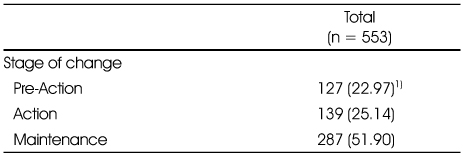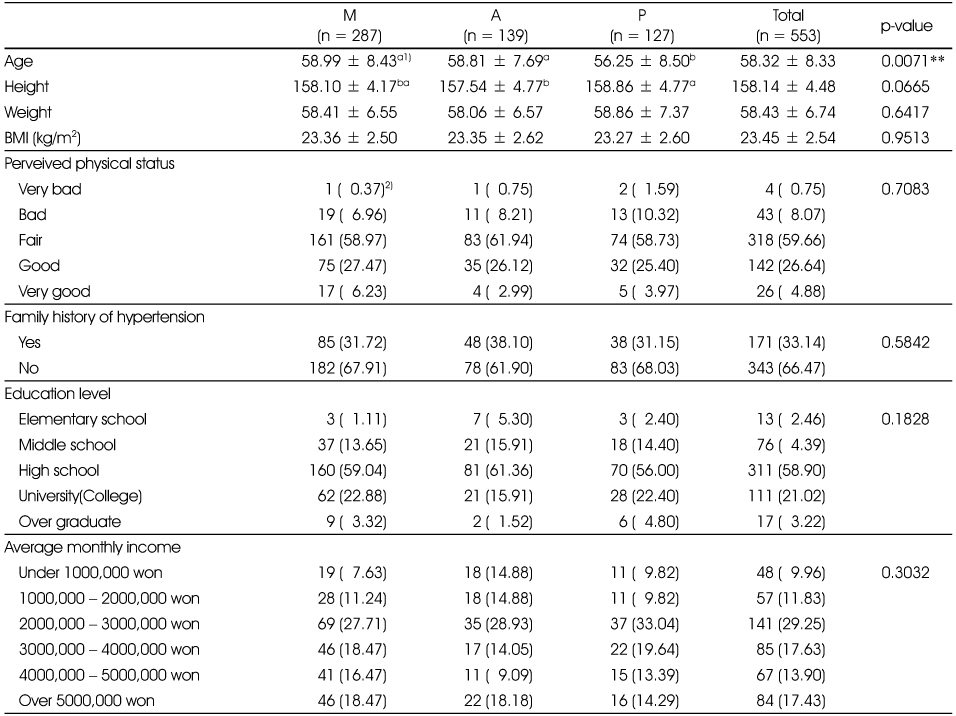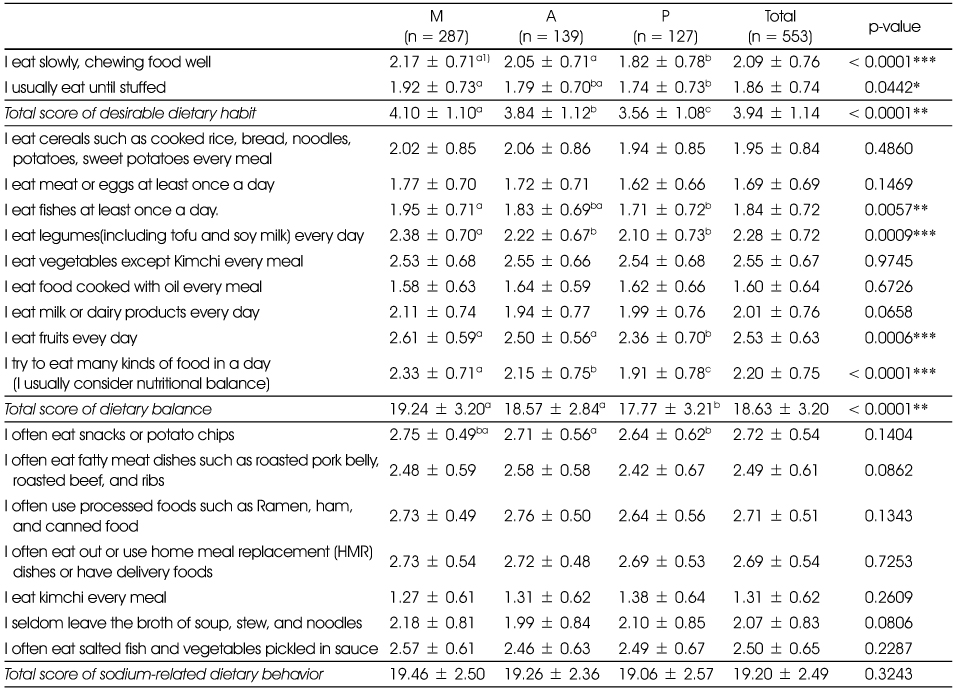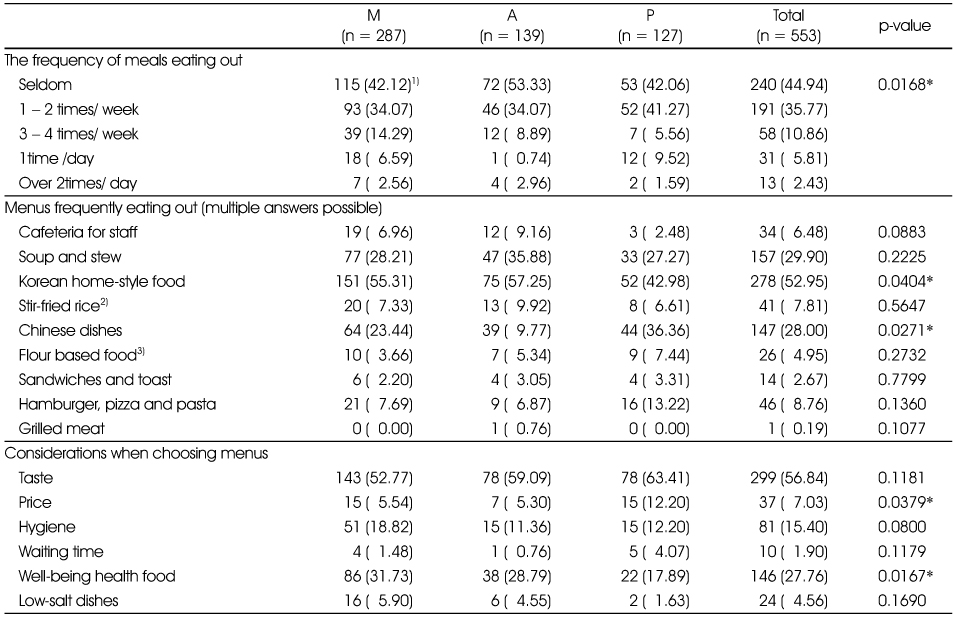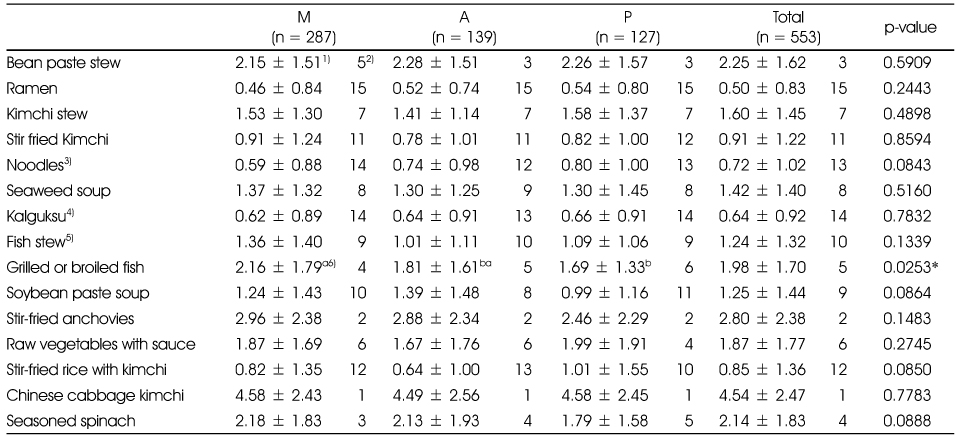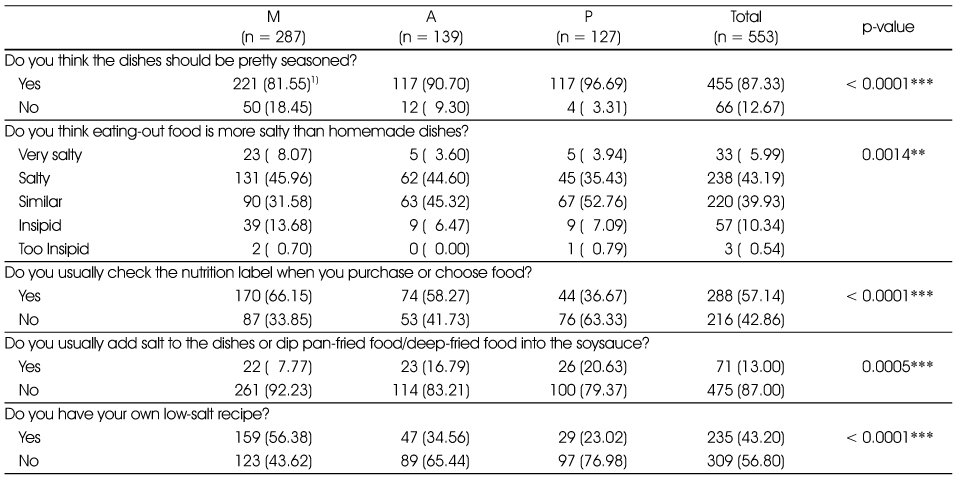References
1. Ahn Y, Kim KW. Beliefs regarding vegetable consumption, self-efficacy and eating behaviors according to the stages of change in vegetable consumption among college students. Korean J Community Nutr 2012. 17(1)1–13.
2. Anliker J, Damron D. Using the stage of change model in a 5 day guidebook for WIC. J Nutr Educ 1999. 31(31)175–176.
3. Brug J, Hospers HJ, Kok G. Differences in psychosocial factors and fat consumption between stages of change for fat reduction. Psychol Health 1997. 12719–727.
4. Chobanian AV, Bakris GL, Black HR. The seventh report of the joint national committe on prevention, detection, evaluation and treatment of high blood pressure: the JNC 7 report. JAMA 2003. 2892560–2572.
5. Cho MK. Development of education materials for lowing sodium intake and analysis of educational effects for elementary students 2008. ChangWon National University; 73–180.
MS thesis.
6. Contendo IR, Balch GI, Bronner YL, Lytle LA, Maloney SK, Olson CM, Swadener SS. The effectiveness of nutrition education and implications for nutrition education policy, programs, and research: a review of research. J Nutr Educ 1995. 27(6)277–422.
7. Cohen HW, Hailpern SM, Fang J, Alderman MH. Sodium intake and mortality in the NHANES II follow-up study. Am J Med 2006. 119(3)275.e7–275.e14.
8. Houston MC. Sodium and hypertensions. Arch Intern Med 1986. 146179–185.
9. Kim HJ. Development of sodium usage behavior questionnaire and a case-control study on dietary factors related to hypertension in Koreans 2006. Seoul National University; 72–77.
Doctoral thesis.
10. Korea Food and Drug Administration. Korea Health Industry Development Institute. The office of National Assembly Sook-Mee Son, The Symposium of reducing sodium intake 2010.
12. Lee Y, Park HN. The effectiveness of Na education program in elementary school, -Six month follow-up study-. Korean J Community Nutr 2010. 15(5)603–613.
13. Ministry of Health and Welfare. Korea Health Industry Development Institute. The third Korea National Health Nutrition Examination Survey (KNHANES III), 2005 -Nutrition Survey (I, II) 2006.
14. Ministry of Health & Welfare. Korea Centers for Disease Control & prevention. 2010 National Health Statics. Korea National Health and Nutrition Examination Survey (KNHANES IV-3) 2011.
15. Mori K, Suzuki H, Wang DH, Takaki J, Takigawa T, Ogino K. Relationship of psychological factors with physical activity stage of change in prime-and middle-aged Japanese. Acta Med Okayama 2009. 63(2)97–104.
16. Miura K, Nakagawa H. Can dietary changes reduce blood pressure in the long term. Curr Opin Nephrol Hypertens 2005. 14253–257.
17. National Heart, Lung, and Blood Institute. Your guide to lowering your blood pressure with DASH 2006. [cited 2012 August 1].
18. Oh SY, Cho MR, Kim JO, Cho YY. Comparison of nutritional status and beliefs on health behavior regarding stages of change in dietary fat reduction among Korean men and women. Korean J Nutr 2001. 34(2)222–229.
19. O'Shaughnessy KM. Role of diet in hypertension management. Curr Hypertens Rep 2006. 8(4)292–297.
20. Park YS, Son SM, Lim WJ, Kim SB, Chung YS. Comparison of dietary behaviors related to sodium intake by gender and age. Korean J Community Nutr 2008. 13(1)1–12.
21. Park YS, Lee CW, Suh CS, Lee BK, Lee HS. Nutrition education and counseling 2010. Paju: Kyomunsa; 17–31.
22. Sim E, Kim JS, Ji JS, Sohn SM, Hwang TY, Chung JA, Chung EJ. The effects of a nutrition and body shape education program as part of health promoting projects in an elementary school. Korean J Nutr 2010. 43(4)382–394.
23. Son SM, Kim MJ. The effect of nutrition education program for various chronic disease in elderly visiting public health center. Korean J Community Nutr 2001. 6(4)668–677.
24. Son SM, Huh GY, Lee HS. Development and evaluation of validity of Dish Frequency Questionnaire (DFQ) and short DFQ using Na Index for estimation of habitual sodium intake. Korean J Community Nutr 2005. 10(5)677–692.
25. Son SM, Lee KH, Kim KW, Lee YK. Nutrition education and counseling practice 2007a. Seoul: Life Science Publishing Co.; 26–29.
26. Son SM, Park YS, Lim WJ, Kim SB, Jeong YS. Development and evaluation of validity of short Dish Frequency Questionnaire (DFQ) for estimation of habitual sodium intake for Korean adults. Korean J Community Nutr 2007b. 12(6)838–853.
27. Suh Y, Chung Y. Comparison of mineral and vitamin intakes according to the stage of change in fruit and vegetable intake for elementary school students in Chungnam province. Korean J Nutr 2008. 41(7)658–666.
28. Taylor T, Serrano E, Anderson J, Kendall P. Knowledge, skills and behavior improvements on peer educators and low-income hispanic participants after a stage of change-based bilingual nutrition education program. J Community Health 2000. 25(3)241–262.
29. Yim KS. The effects of a nutrition education program for hypertensive female elderly at the public health center. Korean J Community Nutr 2008. 13(5)640–652.
30. Yon M, Lee Y, Kim D, Lee J, Koh E, Nam E, Shin H, Kang BW, Kim JW, Heo S, Cho HY, Kim CI. Major sources of sodium intake of the Korean population at prepared dish level -Based on the KNHANES 2008 & 2009-. Korean J Community Nutr 2011. 16(4)473–487.
